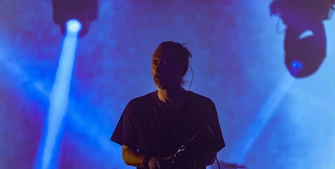Taylor Thomson on AI and the Future of Electronic Music Production
How is new technology impacting electronic music?

Electronic music has always been defined by its relationship with technology. From the first Moog synthesizers to the rise of digital audio workstations, the genre has consistently reinvented itself by embracing new tools. Today, as artificial intelligence becomes part of the studio workflow, producers face a new crossroads that is reshaping both creativity and culture.
AI tools are no longer abstract possibilities. They are already embedded in the daily lives of producers, from instant vocal generation and real-time mastering to plugins that suggest drum patterns or harmonic progressions. Some artists see these advances as the next logical step in electronic music’s experimental tradition. Others fear they could erode the authenticity and unpredictability that make the culture vibrant.
A New Creative Toolkit
The technology now available would have seemed implausible a decade ago. Platforms like Riffusion can generate stems from text prompts, while services such as ElevenLabs create vocal textures that blur the boundary between human and machine. Real-time mastering algorithms polish tracks instantly, and AI-powered production assistants streamline once time-consuming tasks.
Taylor Thomson, the Los Angeles producer behind the Night Signal imprint, is part of a growing movement of artists who see these tools as accelerators, not replacements. “I’m not trying to let AI make my music for me,” Thomson says. “But when I’m stuck on a vocal texture or want to test rhythmic ideas quickly, these tools let me move faster than ever.”
His approach reflects a pragmatic middle ground: using AI to generate raw material, then shaping it with his own sensibility. The results, evident across his SoundCloud releases, maintain a distinct personal identity while exploring the possibilities of computational assistance.
The Question of Authenticity
Not everyone is convinced. Critics argue that electronic music’s emotional weight depends on human imperfections—slight timing variations, creative accidents, the fingerprints of lived experience. They warn that unchecked use of AI could flatten these idiosyncrasies, leaving behind polished but soulless output.
The anxiety extends to broader industry dynamics. If professional-quality tracks can be produced instantly, what becomes of the traditional process of skill-building and experimentation? Will listeners be able to distinguish human-made work from machine-assisted production, and will that distinction matter?
A Hybrid Workflow
For Thomson, the solution lies in intentional integration. His workflow often involves generating multiple AI-assisted elements—perhaps an atmospheric stem from Riffusion or an experimental vocal line—then subjecting them to heavy processing until they are fully embedded in his vision.
“The most interesting results come when you push these tools outside their intended use,” he explains. “I might take a clean AI vocal and run it through granular synthesis until it becomes an otherworldly texture. The AI provides the clay, but the sculpting is all human.”
This philosophy mirrors electronic music’s long history of experimentation with technology, from early synth pioneers to turntablists who redefined the role of the record player. Thomson’s Instagram feed documents these processes, offering a window into how human decisions remain central even in AI-augmented workflows.
The Studio Revolution
AI is not only reshaping creative choices but also redefining the pace of production. Real-time mastering and automated mixing tools streamline technical labor, freeing producers to focus on experimentation. Thomson values this efficiency for the way it multiplies possibilities. “Before, if I wanted to try a new vocal approach, I’d book time, coordinate with a vocalist, record multiple takes. Now I can explore ten different directions in an afternoon. The artistry comes from how I choose and refine them.”
This rapid prototyping could make electronic music creation more accessible, lowering barriers for newcomers. At the same time, it raises questions about how the industry will absorb the surge in content and how producers will differentiate themselves in an AI-saturated environment.
Preserving the Human Element
What unites both enthusiasts and skeptics is an awareness that AI will remain part of the studio environment going forward. The challenge is ensuring it enhances rather than erases the human elements that give music emotional resonance.
For Thomson, the key is what he calls “intentional humanity”—using AI as one tool among many while keeping creative decisions firmly in human hands. Whether in live performance or in digital releases, his goal is to balance technological capability with authentic connection.
Electronic music has never been static. Each wave of innovation, from drum machines to sampling, provoked debate before becoming foundational. AI represents the next chapter in this lineage. The question now is not whether it will change the music—it already has—but how artists like Taylor Thomson will guide it toward futures that remain as personal, unpredictable, and transformative as the dance floor itself.















